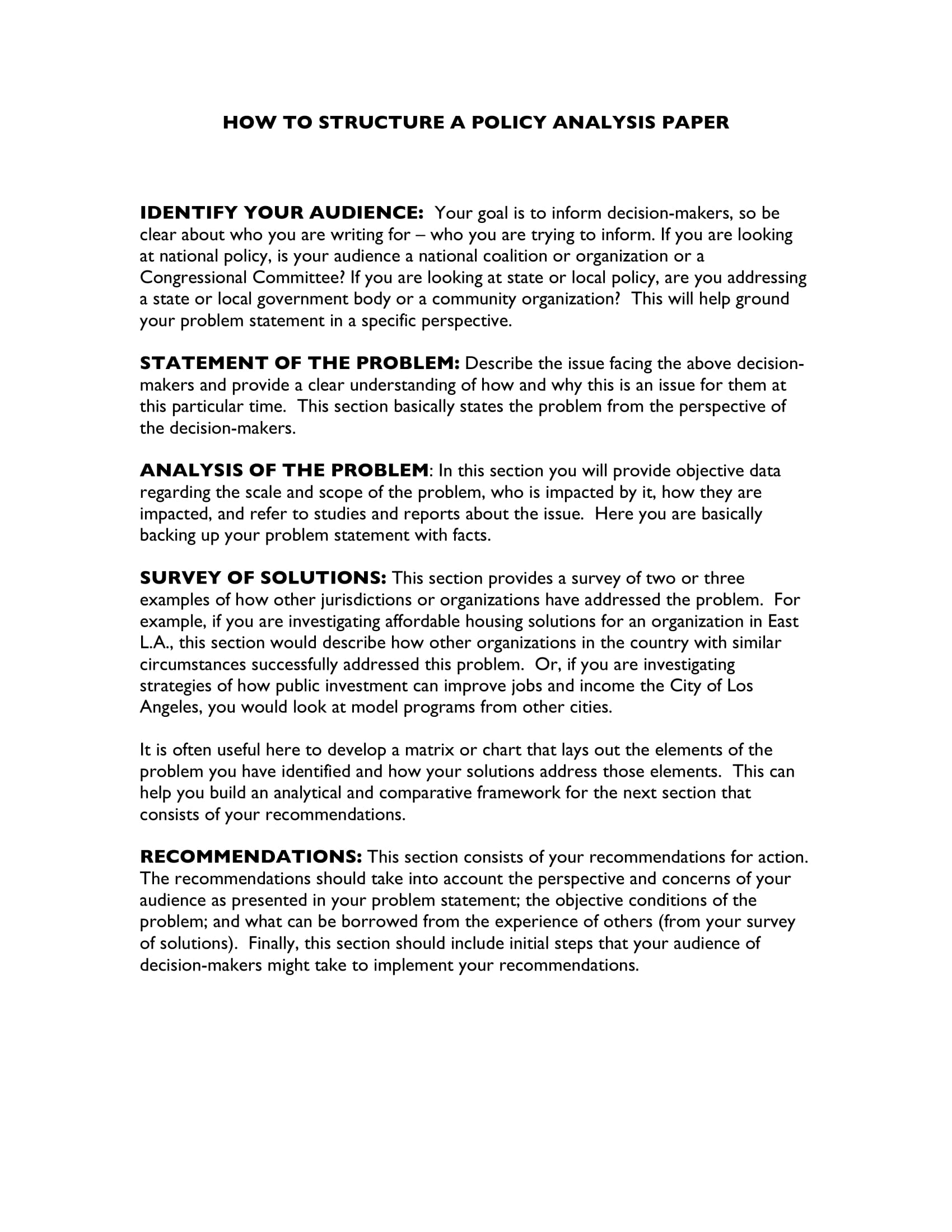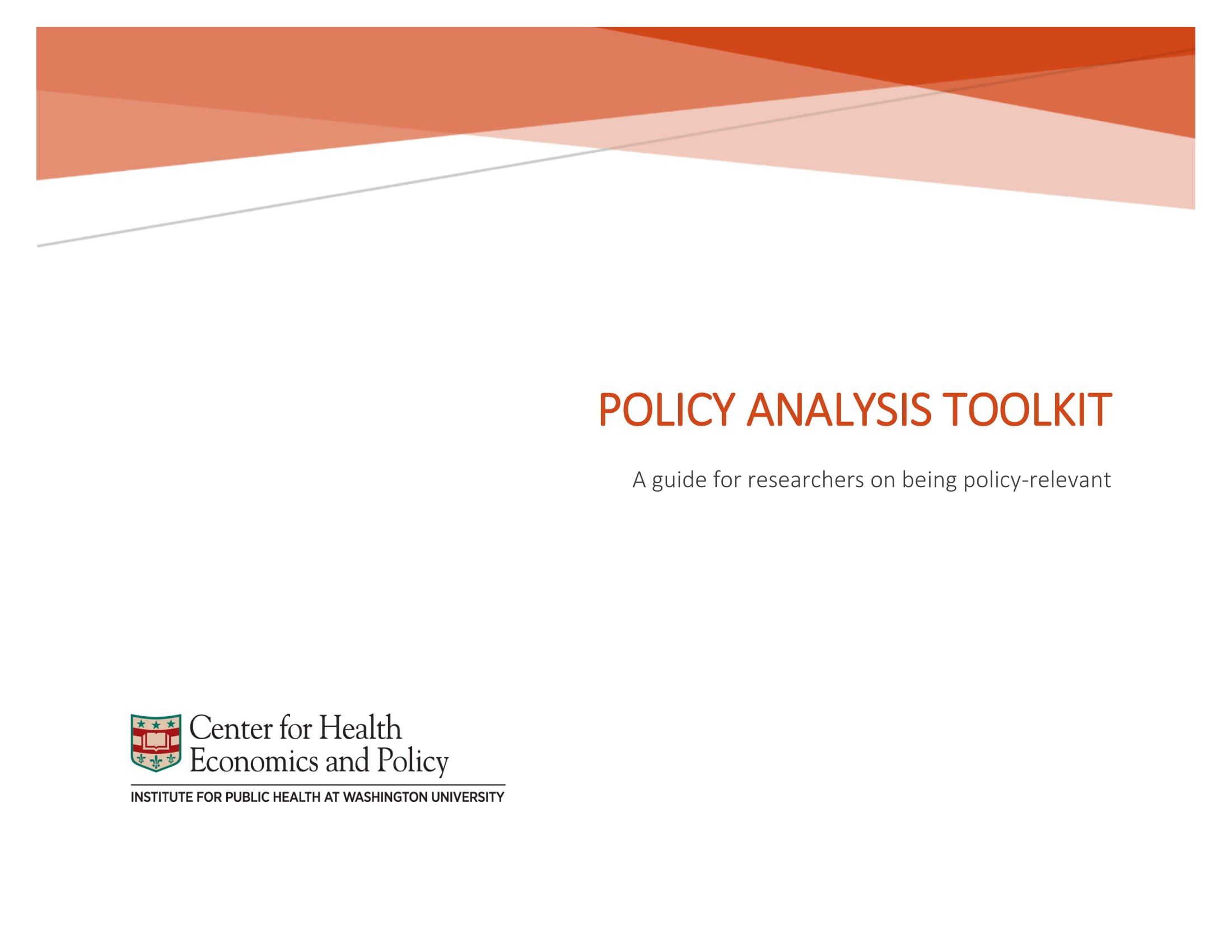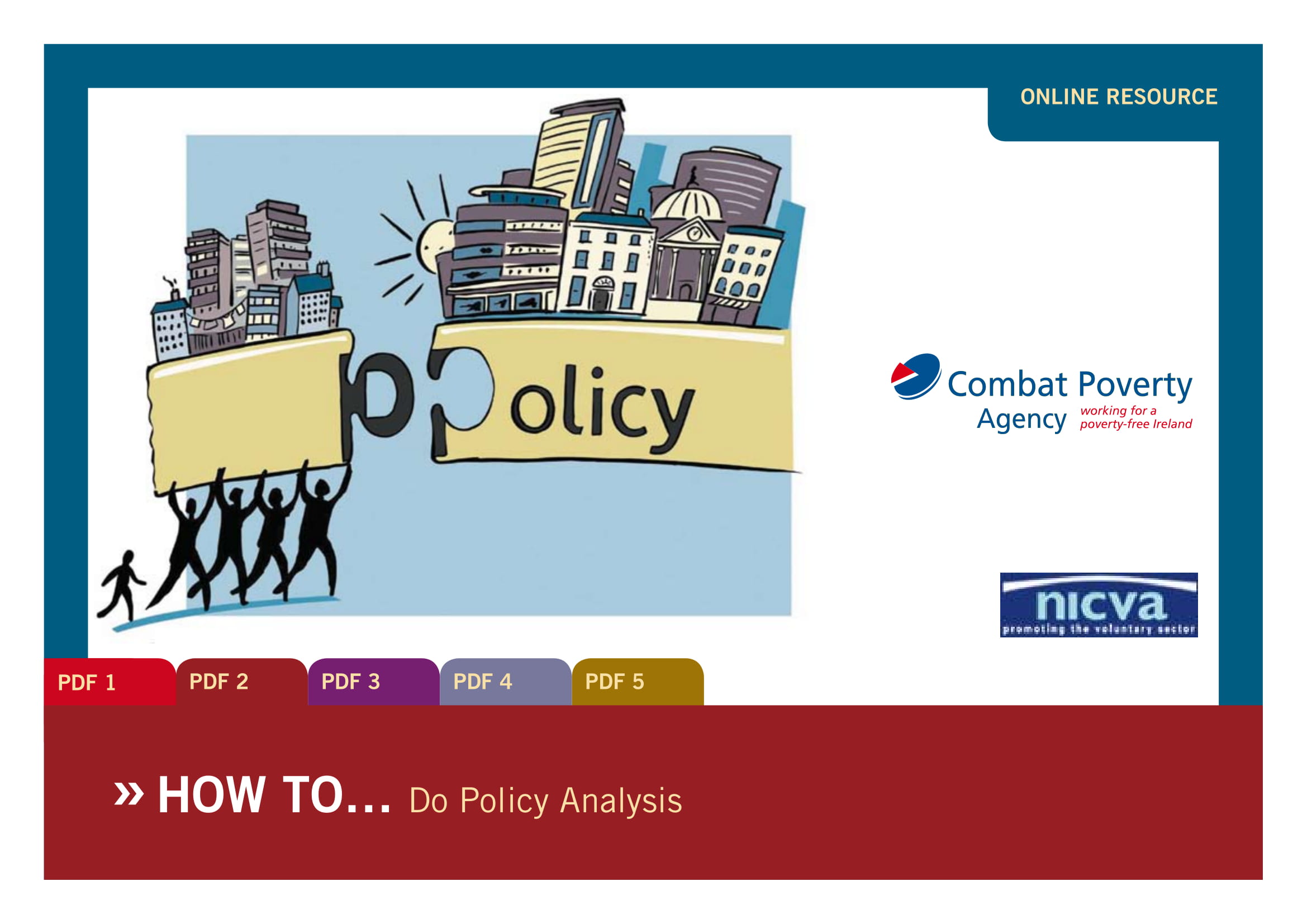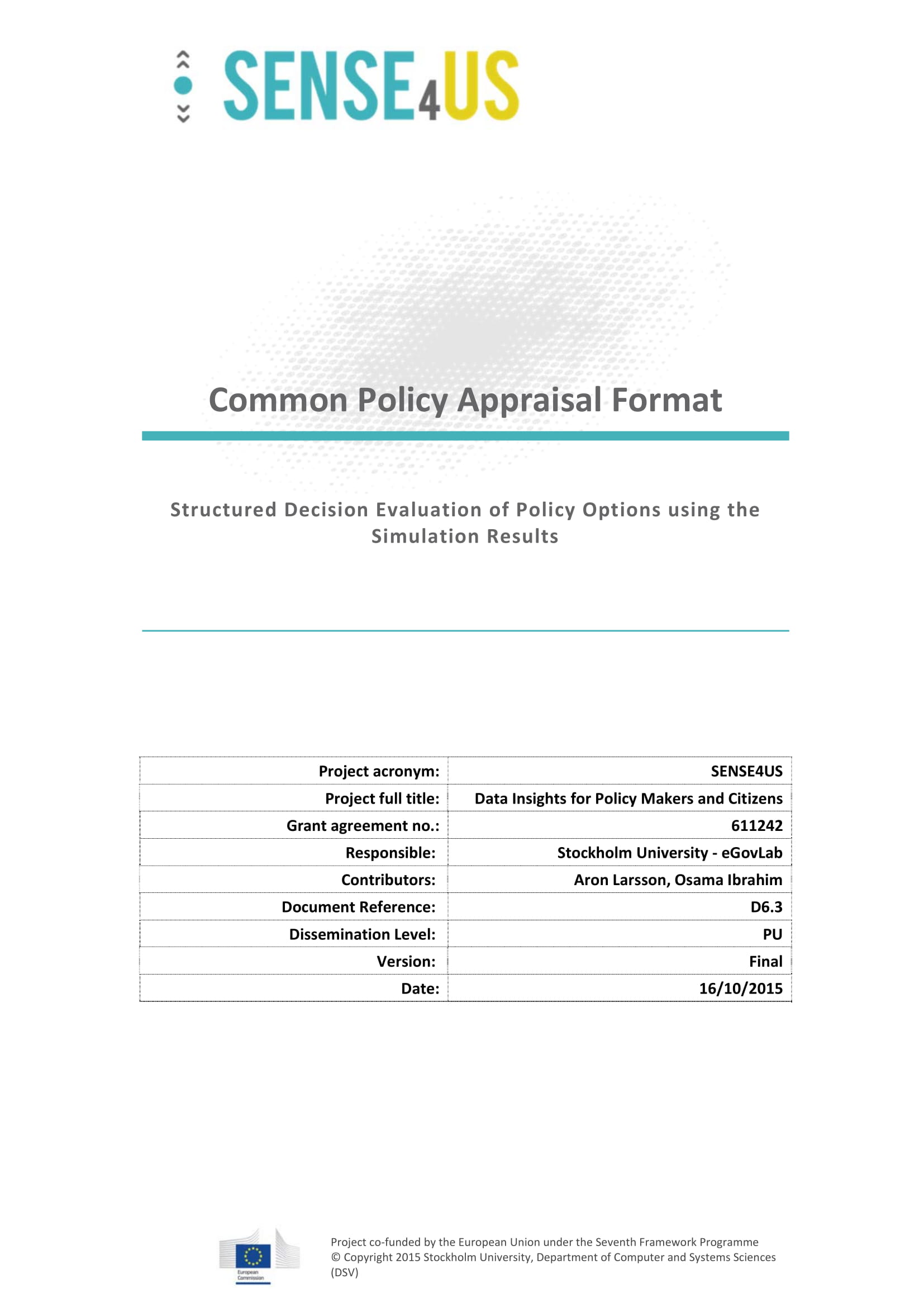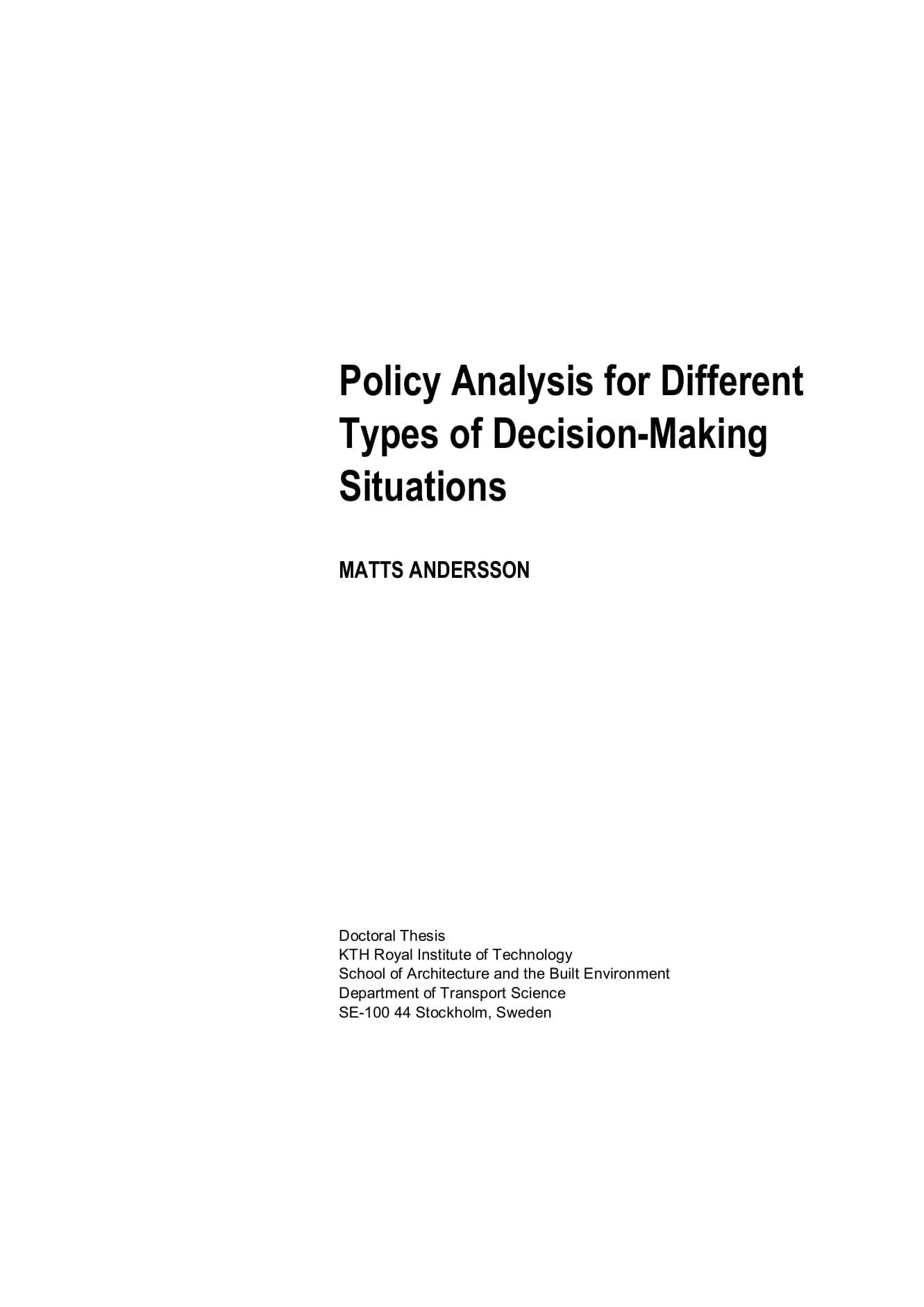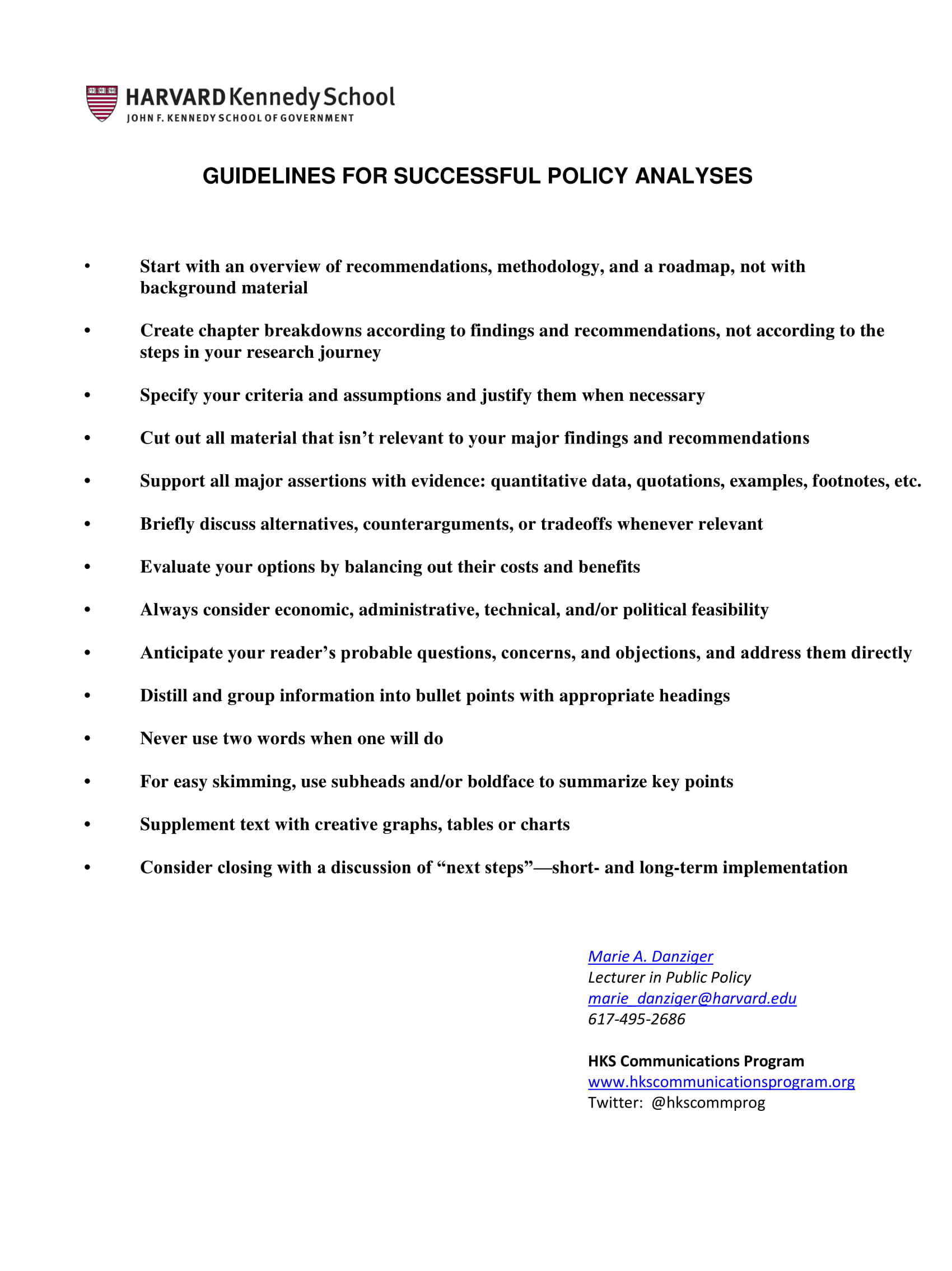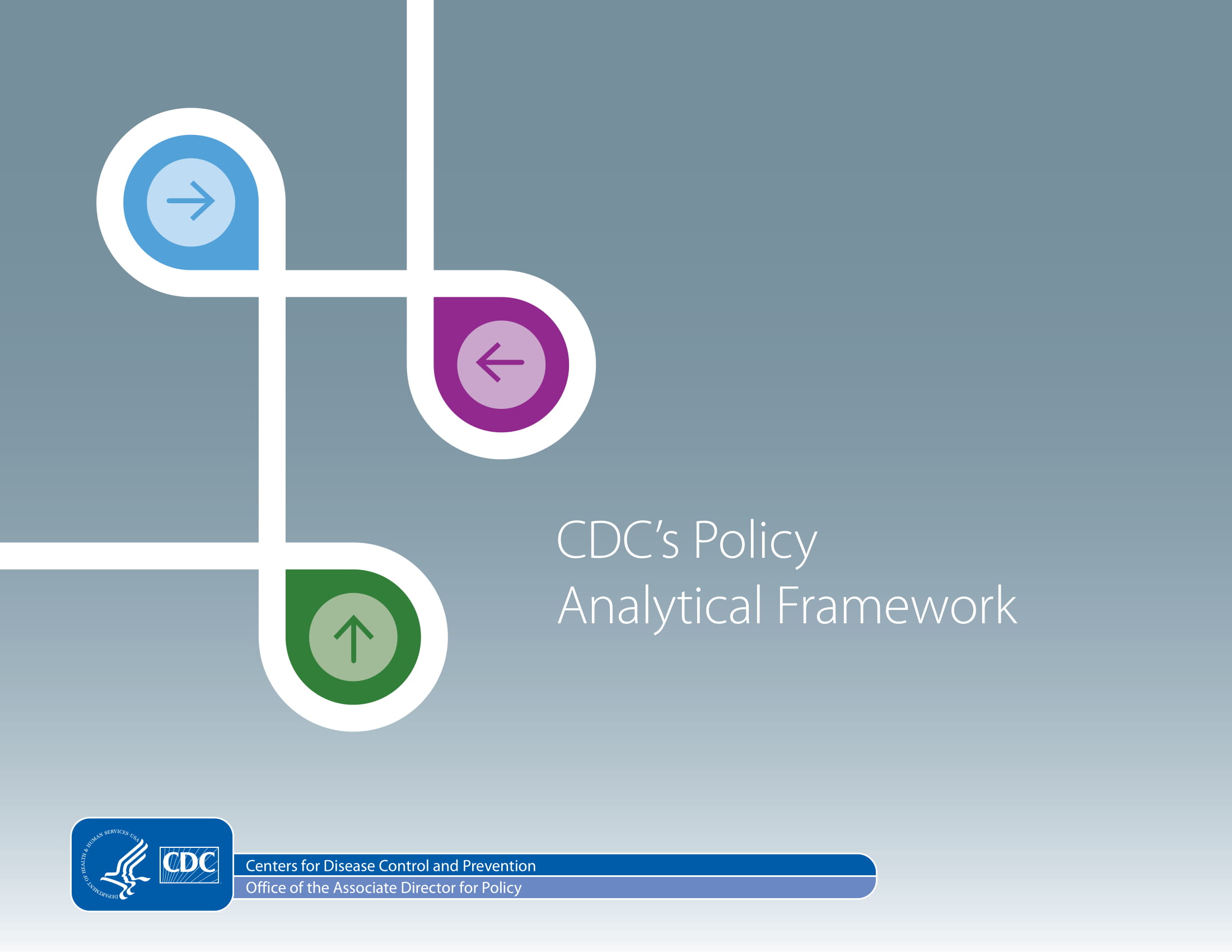10+ Policy Analysis Examples to Download
If you want to achieve the goals and objectives of your business or organization, you have to develop policies that will allow you to guide your members in the direction that you would like to take. Leading the workforce can be a very tedious task especially when it comes to working together for a common goal in consideration of the complexity of the operations of the business.
You do not need to worry about this matter as creating a policy analysis will allow you to come up with the most appropriate and relevant analysis that can help you get particular milestones for the organization. Just like when making an internal audit SWOT analysis, ensure that you will be aware of the basic guidelines and strategies that will allow you to develop the best policy analysis for your business.
Policy Analysis Example
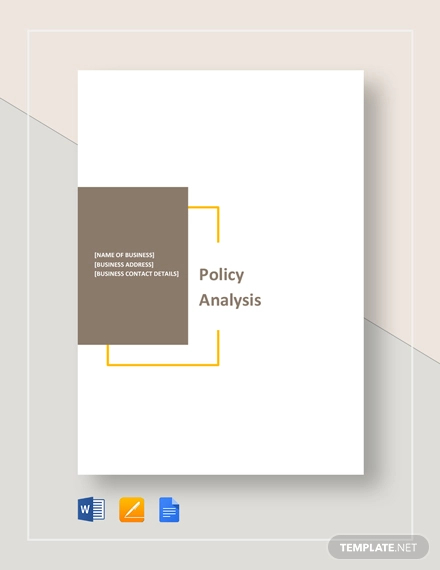
A list of downloadable policy analysis template examples in PDF are available for you to browse through from this post. We have put together these documents so that you can have references and guides once you plan to develop your own policy analysis. Make sure to look into these examples so that it will be more efficient for you to create the specified document.
Policy Analysis Discussion Flow and Layout Example
Policy Analysis Framework Example
Policy Analysis Paper Structure Example
Policy Analysis Development Framework
A policy analysis can be done by different entities like government bodies, medical and health facilities, academic institutions, businesses, and organizations. Even if there are different groups that can make use of this document, the framework of its development and implementation is most likely the same. Here are the basic steps that you can follow if you want to execute a simple policy analysis:
- Be organized when starting the development of a policy analysis. Gather all the items, references, and other materials that you think can be helpful in the creation of a credible and highly usable policy analysis. We recommend you to prepare organizational tools like checklists and outlines as these items can be very efficient when it comes to listing down all the requirements and process flow of your organization’s own policy analysis document.
- Identify the purpose or the reason on why there is a need for your organization to execute a policy analysis. You have to be aware of the objective of the undertaking so you can easily identify the factors and elements that you need to consider as well as the impacts that you must prepare for. Knowing what the policy analysis is all about can also help you develop action plans that are relevant to the achievement of your corporate or business aspirations.
- You have to define the problem at hand and the ways on how the policy can be of help to eliminate the negative effects of the problem that you have specified. There should be a thorough evaluation of the alignment of the policy with the results that you would like to get for you to reduce threats and risks from existing or even recurring business problems.
- Assess the objectives of the policy and identify whether these objectives are good for the policy’s target audience or population. You have to consider the timeliness of the policy implementation as well as its relevance to the operations of the business and the daily work processes where the members of the organization are involved.
- Come up with a SWOT analysis. In comparison to a hospital SWOT analysis, your SWOT analysis for your policy assessment must also focus on both external and internal factors. Ensure that you will have metrics for evaluation so that the results of your SWOT analysis can be aligned with the standards of the business and the things that you would like to achieve.
- Once a particular policy has already been selected for implementation, you have to study the impacts and effects that it has brought to the business. You have to ensure that you will have a continuous policy evaluation and assessment so you can identify whether the specific policy is really good for the business and that it can truly contribute to the growth of the business and its operations. You have to list down all the implications of the policy so you can assess on whether there is a need to change it or just maintain its implementation.
- Lastly, think of other policies that can serve as your alternatives whenever your initial policy did not work. You have to ensure that you have backups especially considering that these policies can actually affect the productivity of the workforce, the direction of the business, and the efficiency of your operations. Moreover, the policies that you implement can also impact the culture within the environment of your business.
Policy Analysis Template and Toolkit Example
Policy Analysis Format and Content Guidelines Example
Policy Analysis Principles
A detailed SWOT analysis can provide a lot of benefits to any organization as it can thoroughly discuss the internal and external factors that contribute to the successes and failures of the business. This is why you should also make sure that your policy analysis is well-formulated, properly formatted, and comprehensive. You have to consider a variety of principles that will allow you to polish the policy analysis that you will come up with. A few of the principles that you always have to remind yourself with whenever you plan to create and/or implement a policy analysis are listed below.
- Make sure that the policies that you are going to analyze are well-defined. In this manner, you can ensure that the solutions or help that the policy can provide you with can be proven as potentially effective. This will help the implementation processes of the analysis become smooth flowing.
- You need to come up with the results that you want to achieve. Otherwise, the policies that you will develop will not be used for anything. There should be an end picture on your mind so that it can serve as a guide when it comes to the development of the policy that you want to execute. Doing this will allow you to develop solutions for the problems, issues, and concerns that you have at hand.
- It is essential for you to remember that you are developing an analysis. Hence, you should not focus on just the positive or negative areas of the policy usage. You should look into all the contributing factors that result to the effectiveness of the policy, or the lack thereof. You have to present an analysis, not provide a concrete decision in behalf of your target audience. However, remember that you may also sometimes be required to provide recommendations and suggestions based on your own perception of the results that you have come up with.
- Do not restrain yourself within a single box. You have to think of different policy actions that you can execute based on the items that you want to realize. Remember that policy analysis processes are created for you to come up with the best option for your business or organization. Hence, focusing on just one policy will lessen your selection if your initial policy choice is found to be not as effective or as efficient as it is expected to be.
- Resilience and being adaptive are characteristics that you should always have whenever you plan to develop a policy analysis. You have to learn how to deal with any changes and uncertainties as long as it is for the betterment of the business, its stakeholders, its operations, and all the other areas in which internal and external corporate touch points are present and can be affected.
- Always check the clarity of your policy analysis discussion. It is important for your facts to always be updated and accurate. More so, you must have firsthand information so that you can ensure the precision of all the details that you will include in your policy analysis presentation. This is the reason why most policy analysis documents are simple, direct to the point, and specific.
- Not all policy analysis work the same for every establishment, organization, or business. You have to keep in mind that there are no perfect policy analysis. There are changes and differences that you may observe especially when it comes to the usage of policy analysis processes and procedures that are based on those that are used by other entities. With this, you have to ensure that the policy analysis that you will create is fit with the operations of your business, the needs of your workforce, and the vision that you have for your company.
Common Policy Appraisal and Analysis Format Example
Policy Analysis Resource Guide Example
Policy Analysis for Different Types of Decision-Making Situations Discussion
Policy Analysis Development Guidelines Example
Policy Analytical Framework Example
Planning to Implement a Policy Analysis?
An HR SWOT analysis, policy analysis, and other kinds of policy documents are only testaments that it is imperative for businesses to evaluate and assess different areas of its management and operations. For your company to continue growing, you have to be realistic when it comes to identifying your concerns and issues. You should also establish the description of the current condition of the business as well as the areas of improvement that you would like to focus on.
Developing a policy analysis can help you either direct or redirect your business toward achieving its goals. More so, it can promote organization and a healthy relationship within your operations. Do you want to develop a policy analysis for your business? Here are some of the guidelines and tips that you can find useful once you already start the creation of the specified document:
- Make sure that you will establish a credible, measurable, and objective criteria for your analysis. It is essential for you to have accurate measures that will allow you to select the best policy for your business for different instances and circumstances.
- Again, it is essential for you to come up with backups and/or alternatives. More so, you should be open to change your policies especially at times when there is a need to update the things that your organization follows. Remove the policies that do not work based on your analysis and change them with new ones that have a high potential of helping the business.
- Use templates and examples as your references. Even if there are different kinds of policy analysis documents, it will still be helpful if you will have references when it comes to formatting your discussion. These items can also be of help in terms of determining the information that you should look into when making your own policy analysis. Once you already have a set of policy analysis examples, it will be easier for you to identify the factors and elements that should be included in the document that you plan to make.
- Evaluate the final draft of your policy analysis and look into any mistakes, errors, and inaccuracies that may still be observed in the content and format of the document. This is very important as the quality of your policy analysis can reflect your standards when it comes to identifying the best policy for your business and the processes that you have immersed in for the particular activity.
Do not forget to look into the policy analysis examples that we have listed in this post. Download any, if not all, of these examples and use them accordingly so that you can be well-guided in the development of the policy analysis document that you need.





